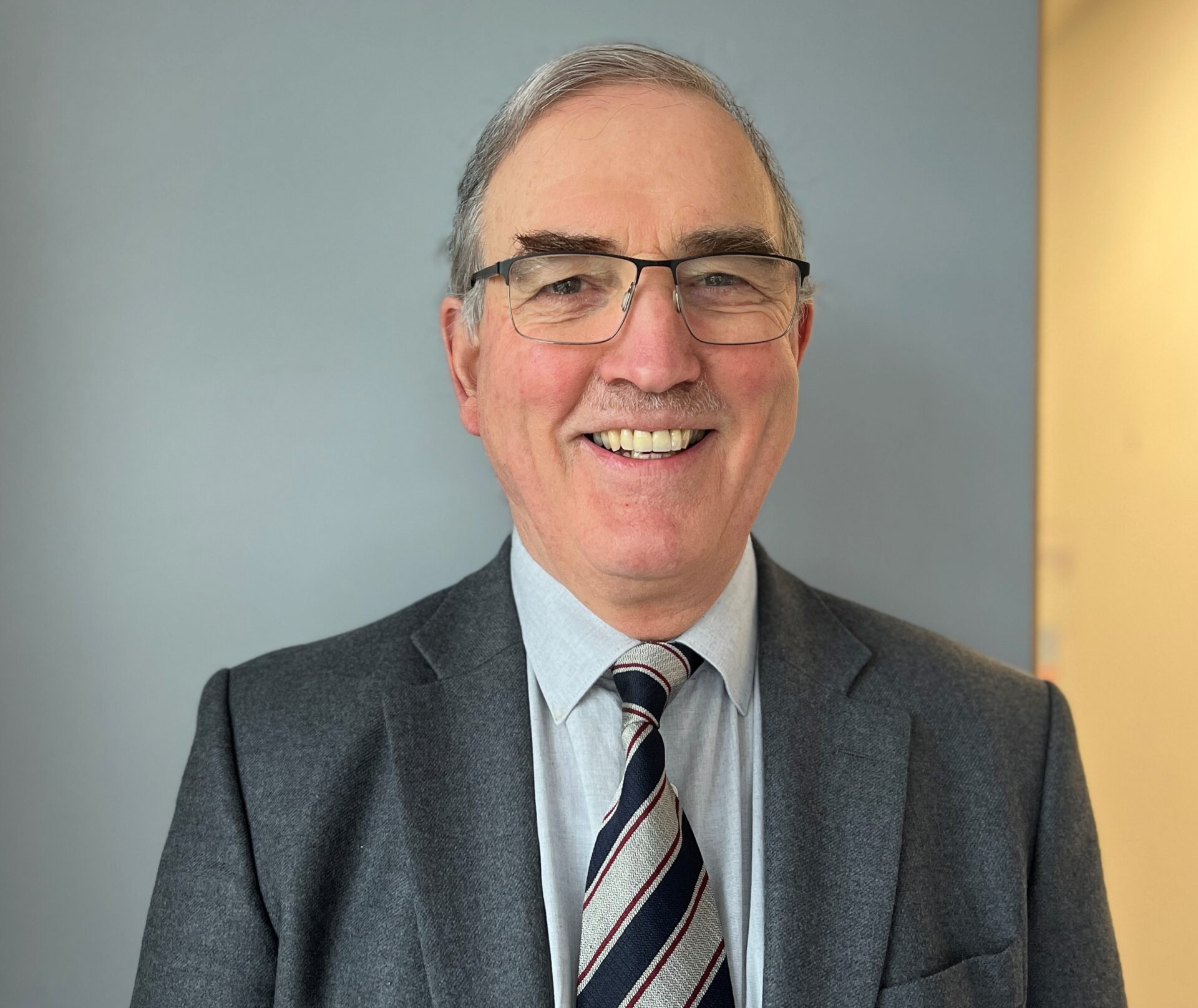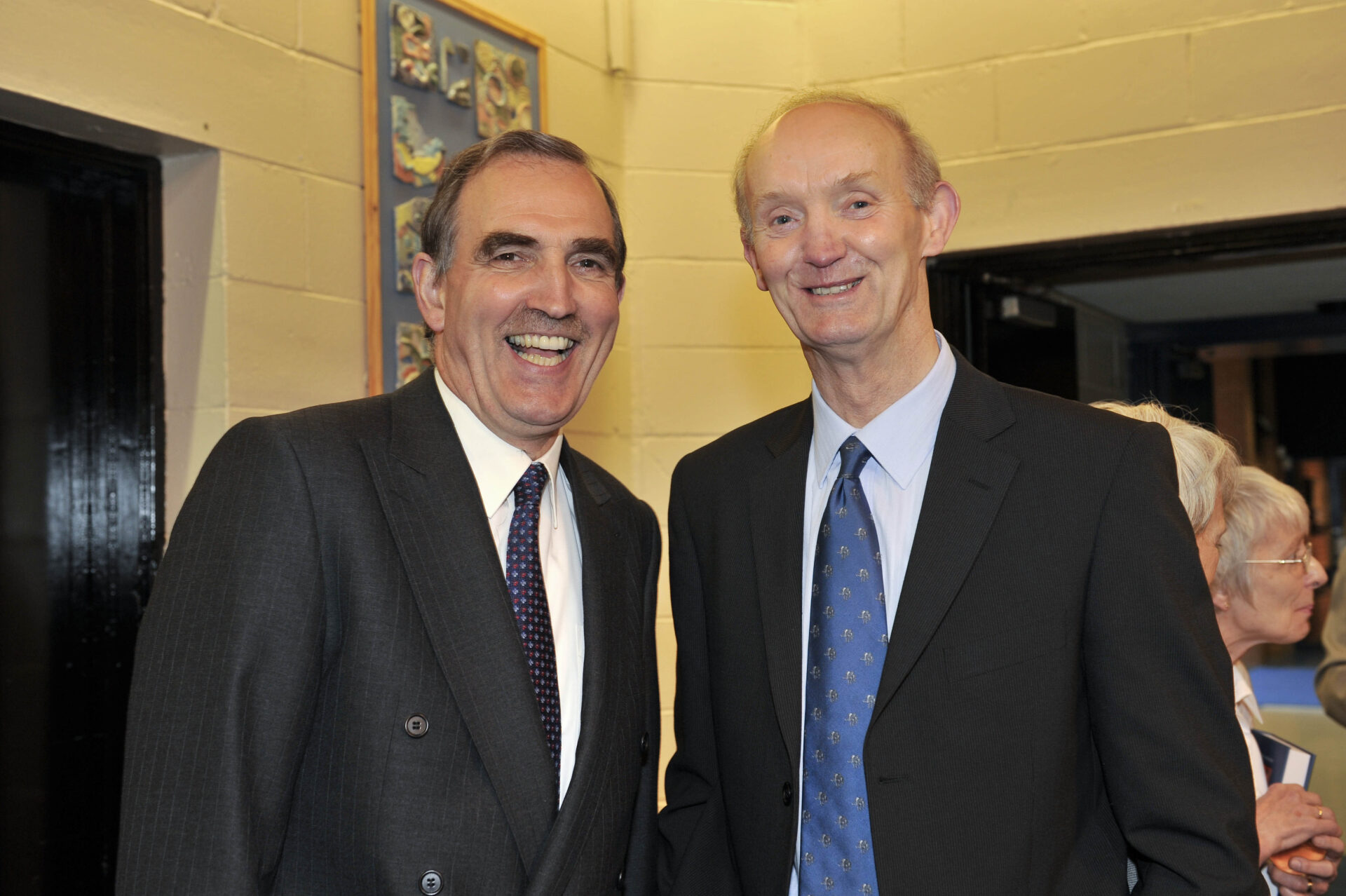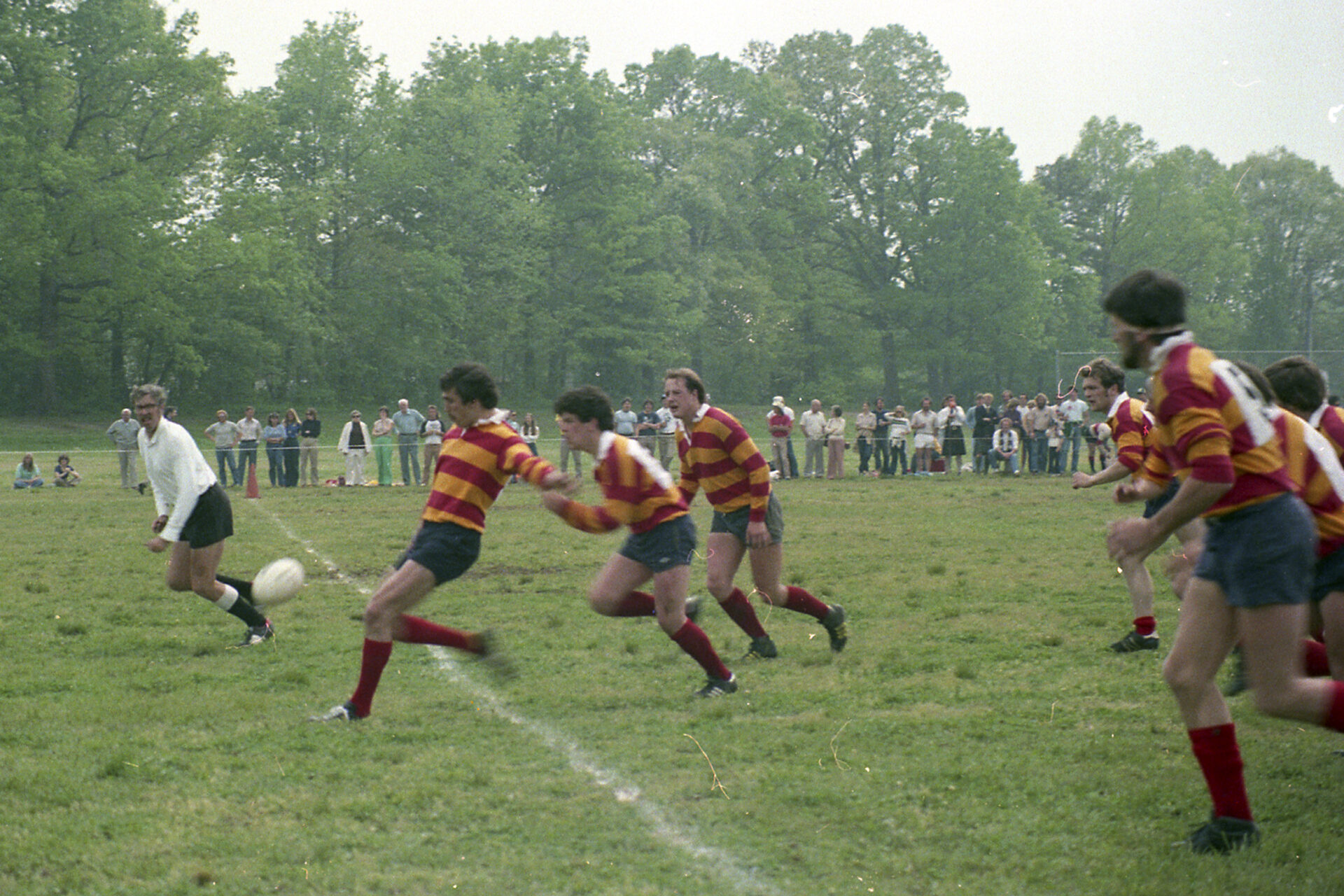HSOG History Chapter 4: Meet the Chair of the 900 Campaign, Mr Colin Mair
Colin joined the High School in September 1976, as a Teacher of Latin and Rugby Coach. Between 1976 and 1985 he was variously: Head of Rugby (1977-88), Head of Latin (1979-85) and Housemaster of Bannerman (1982-85). He joined Senior Management in 1985 as Assistant Rector, becoming Deputy Rector in 1996 and Rector in 2004. He retired in 2015 after 39 years at the School.
Colin is a Trustee of The High School of Glasgow Educational Trust and Chair of The High School of Glasgow’s 900 Campaign which aims to raise money to grow the Bursary Fund, to develop START and to ensure the High School is an environmentally friendly place of learning.
Excelling in all he puts his mind to, Colin even has a Scotland international rugby cap to his name, following a 74-9 victory against Japan in Tokyo on 18 September 1977.

Colin pictured in early 2024.
When did you know teaching was your calling?
I’m from a family of teachers: my grandfather was one of seven children, four of whom ended up in education – three headmasters and a professor. My father, who was Rector of Kelvinside Academy (1958-80) spent half my young life trying to put me off teaching, but it was in my blood. I remember watching my own teachers when I was a boy and thinking to myself, I must remember to do that when I have my own classroom.
What is one of your earliest memories of the High School?
My first year was when Drewsteignton School on Ledcameroch Road first became the High School. These changing times saw an influx of new staff and I started alongside Iain Currie (Geography), Heather Burnet (Home Economics) and John Wilmington (Art). The School in Ledcameroch Road taught pupils from Junior 5 up to Senior 6, with Upper Glenburn Road housing younger year groups. And so, my earliest memory of the High School is while the Old Anniesland campus was being built.
Your tenure at the School spanned almost 40 years, what was it about the High School that made you choose to dedicate your career to one school?
I feel as though I taught in three different schools across this period: in the School as it was at Ledcameroch Road; in Anniesland as it first began, and then in Anniesland as it developed and grew in terms of its numbers and the facilities on offer.
Opportunities often presented themselves to me just at the point where I might have considered jobs in other schools. I was fortunate to be in a school that was developing the way that it was, and I felt attached to it.
How did the High School manage to navigate such changing times in the 1970s and 1980s?
Anything that is new and involves a merger and changing roles takes time to find its rhythm. In the late 1970s, under Rector, Eric Harle, his Deputy, Robert Metcalfe, and Senior Mistress, Audrey Whitefield, the School was adapting to increased pupil numbers, and developing the curriculum, extra-curricular activities and the House System. A key to the success of the High School in the 1980s was the Senior Management: Robin Easton, appointed Rector in 1983, Brian Lockhart, appointed Deputy Rector in 1981 and Audrey Whitefield, Assistant Rector. This trio created the modern-day High School and were a hugely effective team who complemented one another well and appointed excellent members of staff. Likewise Eileen Robertson provided outstanding leadership at the Junior School.
Two years after Robin’s appointment, the Leadership team expanded, and I was offered the role as Assistant Rector. I had the best training, sitting in the Rector’s study and learning from these three individuals who were aligned on the ethos they wanted to create and formed very positive relationships with parents and pupils.
Norrie Thomson, the big Appeal fundraiser, and the first Bursar of the School, was instrumental alongside Norman Macfarlane and others in saving the School in the 1970s and helping it flourish. This, coupled with a Board of Governors Chaired by Norman Macfarlane (please note, Norman received his knighthood in 1983, before being created a life peer in 1991) and the involvement of former Elmbank Street and Garnethill pupils, who were in major roles in law, education and business in the city and country, helped the School to operate and grow effectively.

Colin with former Rector Dr Robin Easton (1983-2004).
Why did you accept the invitation to Chair the 900 Campaign?
Given how I benefited personally from all that had been created back in the 1970s and 80s, there was no question that I would accept the invitation when asked by Chair of the Board, Margaret Stewart. I was very close to Lord Macfarlane, especially latterly, and I know what he would want me to do.
What are your hopes for the 900 Campaign?
The 900 Campaign is an amazing opportunity, given our remarkable anniversary, to remind the world and the current school community how the School has evolved since the 1970s and how everyone today can play their part in taking its story to the next stage.
I’ve looked back at previous fundraising campaigns including the initial Appeal in the 1970s which in plain terms said, “If this school is going to continue to exist this is what we are going to have to do”. The success of that Appeal shows just how effective it was and how everyone did what they could to save the School. Then in 1981, a second Appeal came which in effect said, “We’ve already been very successful in this short time and we want to take this to another level”. The messages were clear, and there was wholehearted support from the entire community. I hope the 900 Campaign can replicate this.
What does the High School mean to you?
The High School is a community that cares: community and ethos are huge. It is also a place of ambition, high standards and excellence. It is the ability to balance both that makes the School so special and, over the years, it hasn’t moved from its core aim of helping young people to make the most of their abilities.
What is the best piece of advice you’ve ever been given?
My father used to say that you’ve got to take the rough with the smooth. You must learn to ride out the difficult times and keep your sights set on where you need to be.

Colin in action on the rugby field playing for his club, West.
If you could take one book to a desert island, what would it be and why?
I would take Homer’s Odyssey as Odysseus got himself home and had some adventures along the way. Why wouldn’t you want that book to inspire you on a desert island?
Who or what inspires you most and why?
I have been lucky in life, and in my sporting career, to meet some very special people who have been a huge influence on me. These figures of respect who cared about me and helped me, pointed me in the right direction.
Is there anything else you’d like to add?
I had the unusual circumstance of having a seat on a journey that a lot of people thought would never happen or succeed. My career started out with a classroom in a hut in the playground of Drewsteignton and I’m proud of where the School is today.

